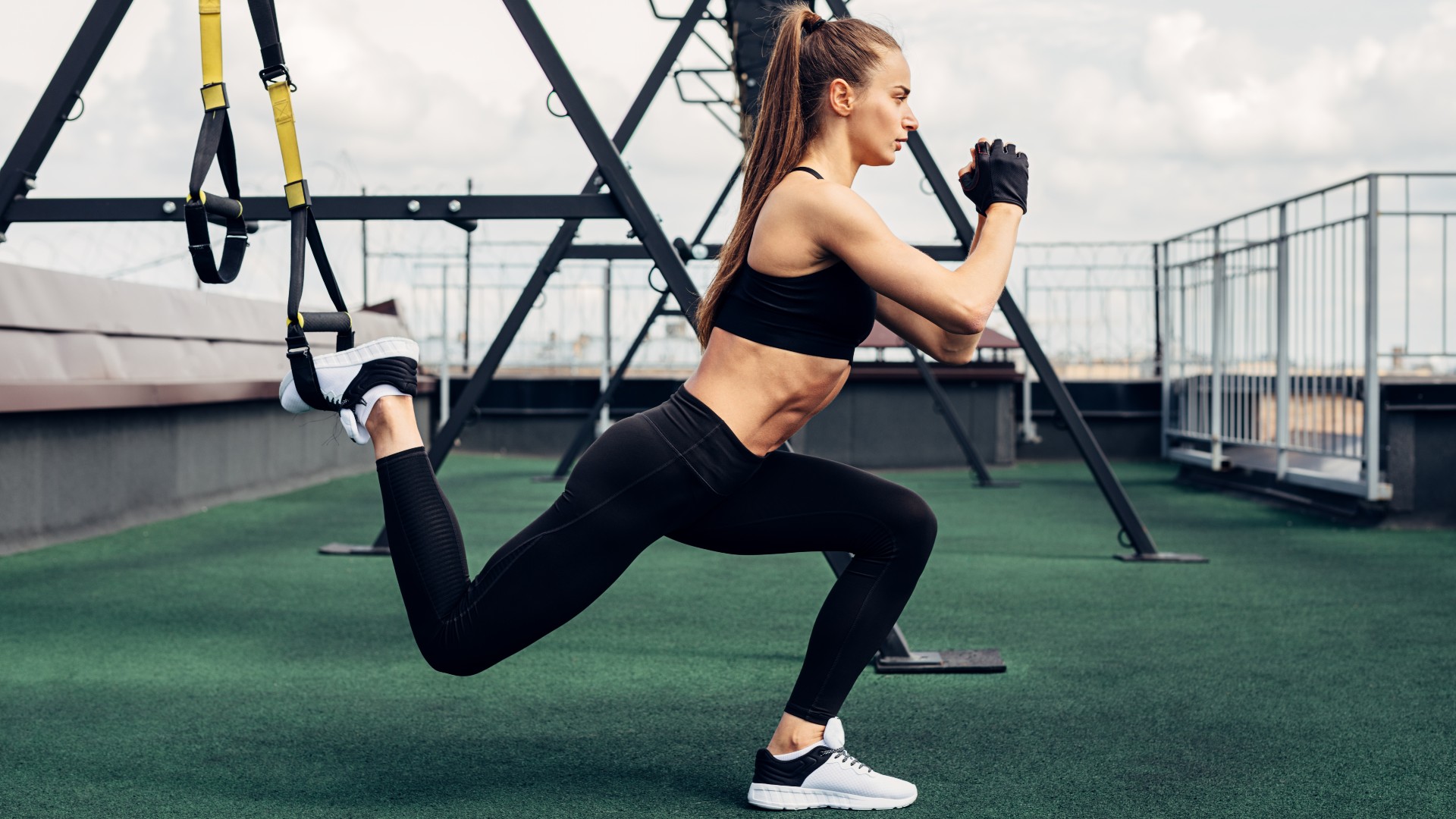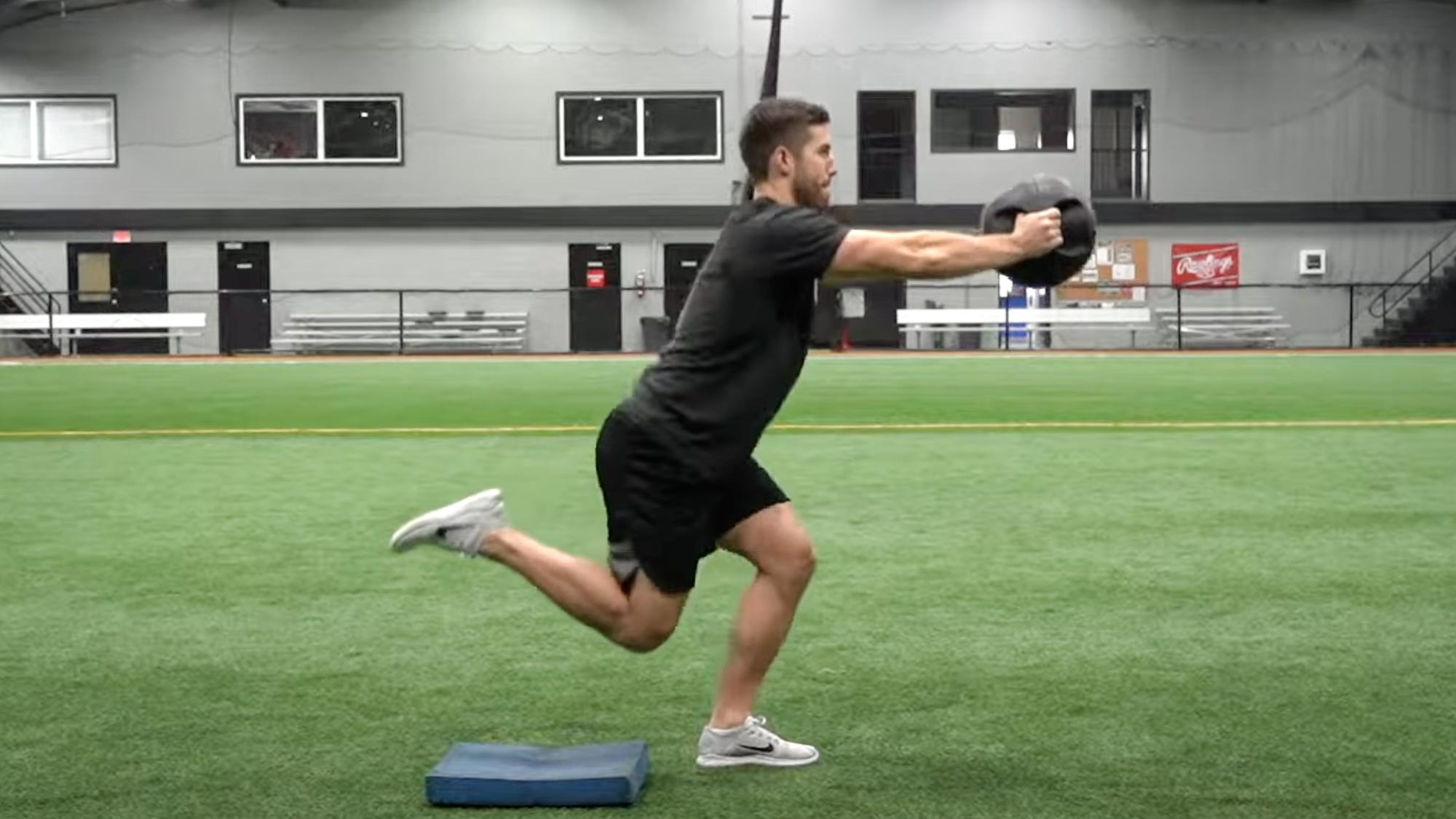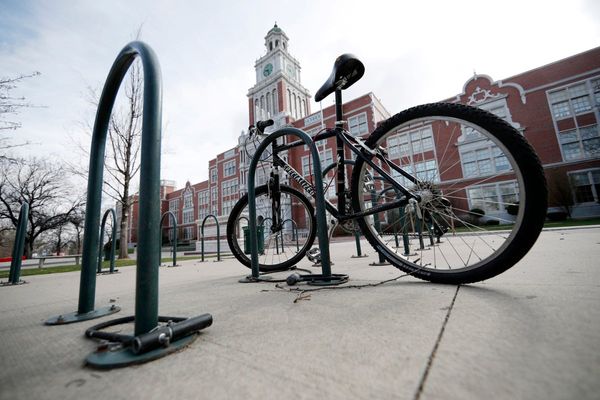
I’ve seen skater squats all over my socials recently, but it’s not a move I spend any time on, so I did 50 reps every day for one week. Read on to find out what happened to my body.
The single-leg squat variation involves balancing on one leg and lowering your knee behind you, making it a unilateral exercise to torch the lower body muscles — namely, your glutes, quads and hamstring muscles. But there’s an added challenge for your upper body too.
I added this one bodyweight leg exercise to my daily routine. Here’s how it went.
How to do skater squats
Let’s break down the skater squat step-by-step.
- Stand with both legs shoulder-width apart and engage your core muscles
- Bend your left knee, then send your left leg back and lower into a lunge, tapping the knee to the floor behind you. Keep your hips square and avoid touching the ground with your back foot
- As you do this, extend both arms in front of you to shoulder height, maintaining a tall spine
- Pause, then reverse the movement to stand back up in the starting position
- Complete reps on one side and switch.
To make the exercise easier, place a small box or barbell plate behind you to rest your knee on. As a progression, hold dumbbells (we recommend some of the best adjustable dumbbells) in each hand to increase load on the muscles.
The leg exercise primarily strengthens the hips, glutes, quads and hamstring muscles but also targets your core, shoulders and arms by mimicking frontal raises — a popular shoulder exercise for the anterior deltoids.
Other benefits include better coordination, stability and balance in your lower body while helping to develop muscle, strength and power. The move also decreases the pressure on your knees by reversing the leg behind you rather than stepping forward. Common mistakes include the knees caving inward, leaning forward excessively, lifting the front heel and rounding the back.

I did 50 skater squats every day for one week — here’s what happened to my legs
A little goes a long way
The skater squat creates hard work for your standing leg, which keeps you upright and stable as you send your other leg behind you. Despite its name, the move is similar to a reverse lunge or Bulgarian split squat, except you’ll need enough mobility in your hips, knees and ankles to touch your knee down without supporting your back leg.
I hit the ground squatting with 25 reps per leg which I split into 10 sets of 5 reps. Despite the bitesize attempts, my quads and glutes were on fire, especially as I drove up through my standing leg during the concentric phase of the exercise (standing up). Your bodyweight alone is enough to torch your legs, and coupled with lifting the arms, it's a hardcore exercise.
I wobbled a lot
It’s common for beginners attempting the move to notice the knees turning inwards and some wobbling. Despite lifting weights regularly, I still wobbled around before finding my groove further along the challenge.
It’s worth noting that I started each day using my body weight and placed a few stacked barbell plates behind me until I felt more comfortable and my range of motion improved — skater squats are used a lot during warm-ups before leg workouts to improve balance, flexibility and coordination before “big lifts” for this reason.
The plates helped reduce the distance my knee traveled, and eventually, I began to feel more stable and had more control over my movements.
I added some weights
By day three, I felt noticeably more competent, which was surprising because good balance isn’t my forte.
With the basic movement pattern somewhat locked down, I added a set of light dumbbells to the skater squats, lifting them into a frontal raise as I lowered into the squat. Immediately, this switched on my shoulder muscles and arms, but I also felt my core working harder to keep me upright.
Despite this, I found it easier to balance with the counterweight of the dumbbells and continued this way for the rest of the challenge.
My legs felt torched
The goal of the skater squat is to torch the legs — job done. I came away from this one with charged-up and achy glutes and quads. Although my hamstrings felt active, they escaped a beating.
The move helps develop explosive power by working one side of the body at a time, focusing on the two largest and most powerful muscles — the glutes and quads — while activating the upper body. As you strengthen the muscles surrounding the knee joint, you should notice improvements to knee stability, too.
I did 50 skater squats every day for one week — verdict
The skater squat challenge reminded me of when I attempted 90 pistol squats every day for one week in a recent challenge. In fact, it's a bridging exercise used for people building toward pistol squats because it requires less flexibility and it's slightly easier to balance.
My legs hurt, my fragile ego hurt even more and I had learned a few things worth knowing about my body. Drawing some comparisons with that challenge, in both cases, I found the move much easier to do by the end of the week. It took less preparation to find my flow with the skater squat.
It’s no shock that I hadn’t sculpted lean and rippled leg muscles to rival a bodybuilder in those short seven days, but my legs certainly felt stronger, I noticed less tightness in my ankles and my balance had definitely improved. Regular practice has that effect.
There’s another good reason to add unilateral exercises to your strength training programs. Single-sided moves help reduce muscular imbalances caused by favoring your dominant side — mine is the right side, and I found it considerably harder to do skater squats using my left leg.
A growing body of research shows that isolating this way can address these imbalances and strengthen the weaker muscles in the body. I can reach the ground with my knee, but my next goal is to increase weight of the dumbbells. Wish me luck.







